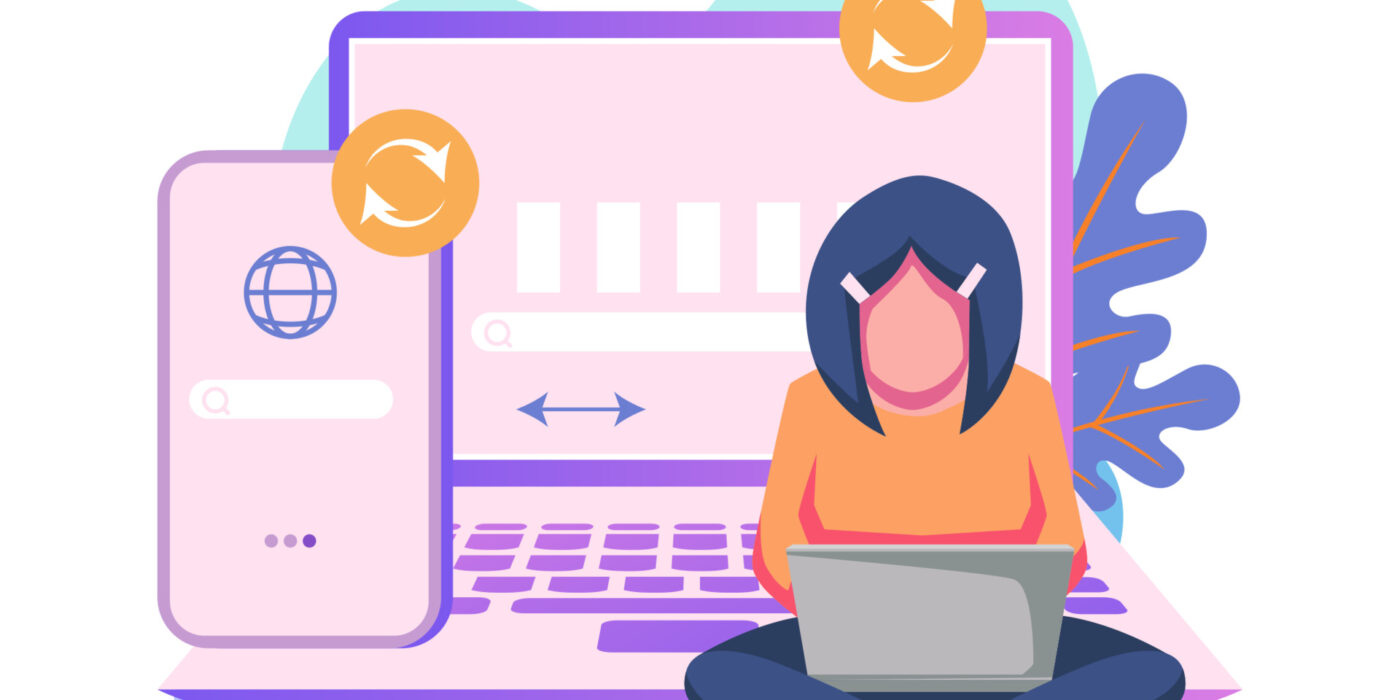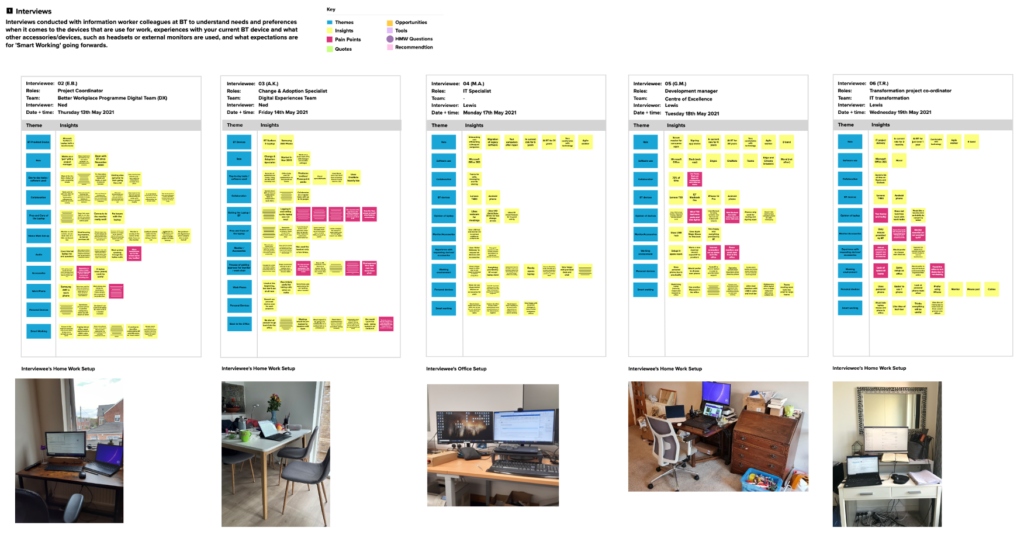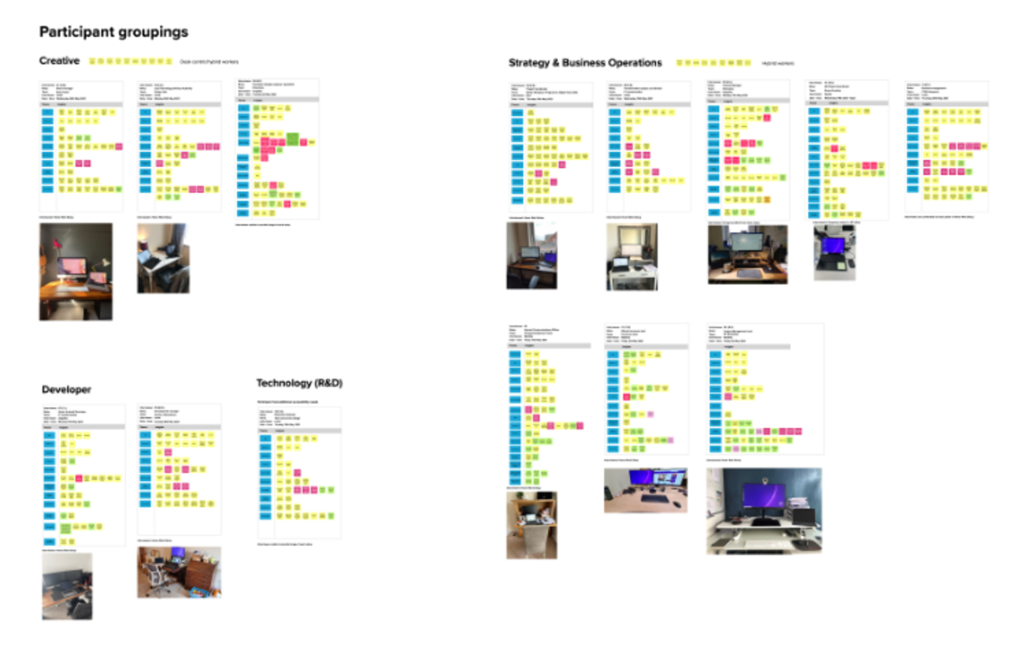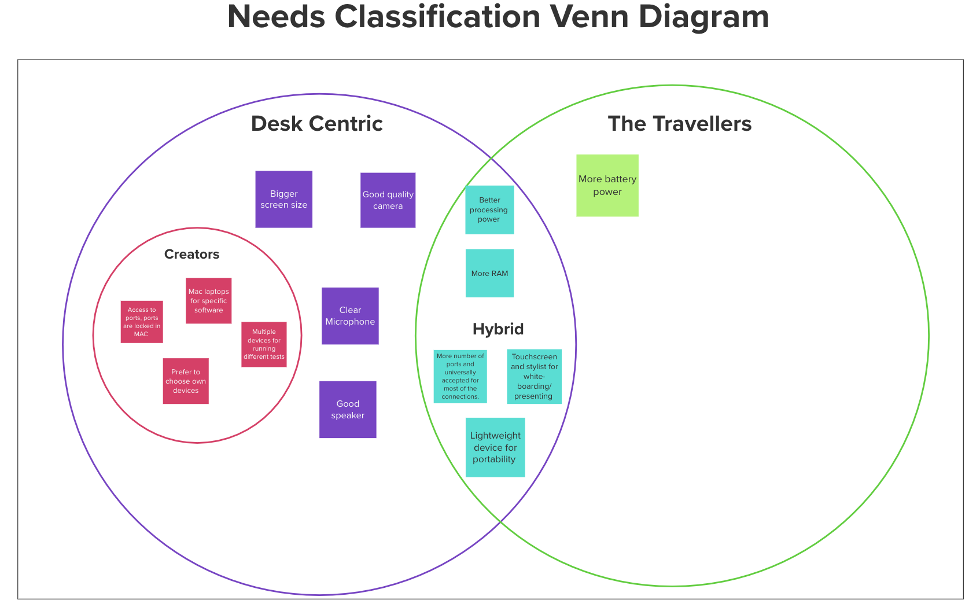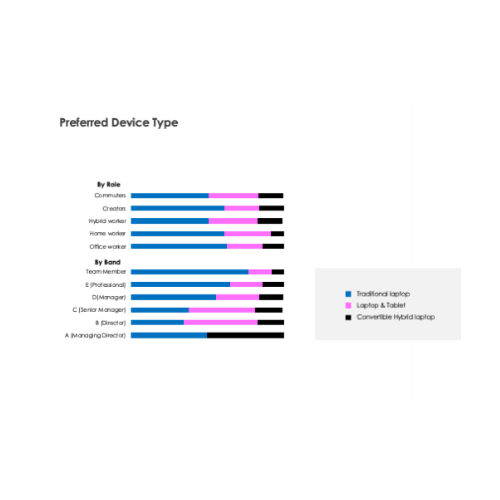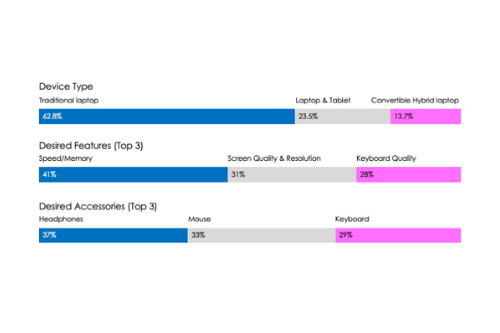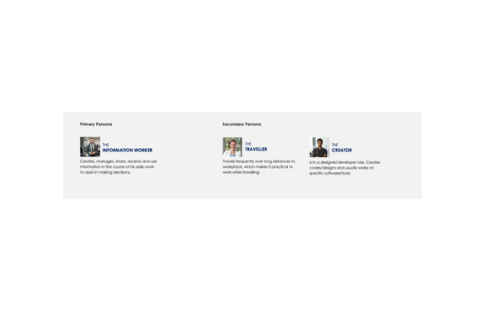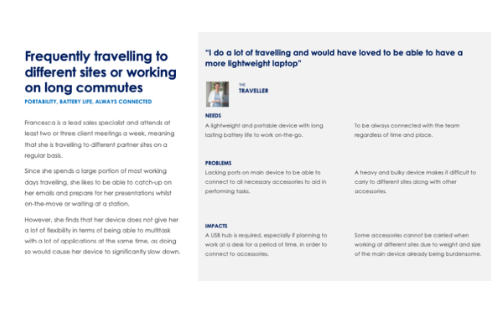In today’s fast-paced digital world, the right tools can make all the difference in workplace productivity and employee satisfaction. But how do you determine which devices are truly needed for optimal performance? In this case study, we dive into how strategic research helped a leading company refine its device allocation strategy. By understanding employee preferences and aligning devices with specific work types, we transformed the way the organization equipped its teams for success. Read on to discover the insights and methodologies behind this impactful transformation.
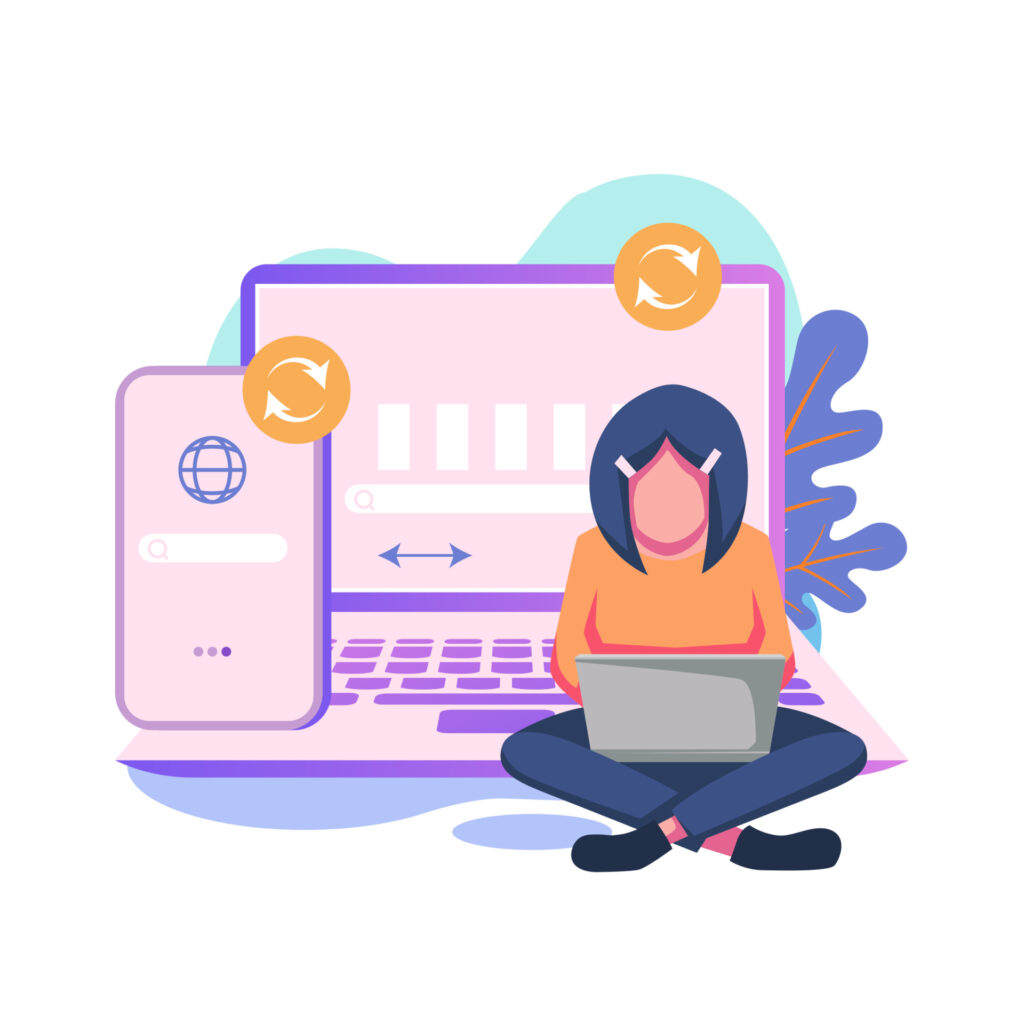
Project Scope
- Client– British Telecom
- Timeframe– 6 weeks
- My role-UX Researcher
- Team– Me along with another researcher, a UX Consultant and UX delivery Consultant
- Method– Generative Research,Surveys,Personas,Secondary research
- Tools– Mural, Adobe XD, Teams, Microsoft Forms, Excel Word Speech to text tool and QuickTime Player
Project Overview
![]() CLIENT KICKOFF
CLIENT KICKOFF
The Client was looking for help to understand their future device needs for thier employees who they like to call information workers. Due to a shift towards a ‘Smart Working’ strategy, their plan was to provide thier employees with devices and accessories that not only meet their needs but also become ‘device they love’.
Previously device management followed a ‘one size fits all’ approach to allocation. However, as thier employee needs and working environment evolves, a more evidence-based perspective was required to them.
![]() OBJECTIVES
OBJECTIVES
- Conduct in-depth interviews with different information workers to discover their needs and behaviours.
- Analysing general workplace trends such as approaches to flexible working and collaboration (remote/in the office).
- Analyse insights gained and create different personas from these.
- Analyse competitor approaches and best practices.
- Research technology trends for future device considerations.
![]() NOTES
NOTES
Currently, employees tend to receive a standard Lenovo ThinkPad with some receiving the latest models as they have been added to the portfolio. However, this strategy does not consider specific employee needs and it’s not an extremely impressive device compared to others available in the market. Only 1000-2000 people have these premium devices whilst majority of the business are still using older more functional devices
The Process
To develop a strategic device allocation plan, we followed a structured research approach. We began by aligning with stakeholders to define business objectives and key research areas. Next, we conducted primary research through user interviews and surveys to understand employee needs and challenges in device allocation. Complementing this, secondary research (desk research), including discussions with Computacenter, provided industry insights on best practices for device management. The collected data was then analyzed and synthesized to identify key trends, pain points, and opportunities. Based on these insights, we formulated actionable recommendations to optimize device allocation strategies, ensuring efficiency, security, and user satisfaction. Finally, our research findings guided the implementation phase, influencing product decisions and operational improvements.
1️⃣ Understanding Business Needs → Research objectives, Stakeholder alignment
⬇️
2️⃣ Primary Research → User interviews, Surveys
⬇️
3️⃣ Secondary Research (Desk Research) → Industry insights, Computacenter discussions
⬇️
4️⃣ Data Analysis & Synthesis → Identify key patterns, Pain points, Trends
⬇️
5️⃣ Actionable Insights → Translate findings into strategic recommendations
⬇️
6️⃣ Implementation & Impact → Guide product decisions, Optimize device allocation
 Primary Research
Primary Research
To conduct our primary research we used two research methods: Qualitative and Quantitative data analysis. We used triangulation analysis to derive the final insights from both the research methods.
In-depth ‘Information Worker’ colleague interviews
Conducting semi-structured interviews allowed us to gather a detailed understanding of the current primary and peripheral device and software usage, daily tasks, needs, preferences and frustrations.
Methodology
- Screener – We selected a diverse group of information workers across different domains and work profile (customer support colleagues to developers to directors).We engaged with a total of 31 colleagues over a 3-week period.
- Remote Moderation – These interviews were conducted online using Teams call and calls were recorded with participants consent using QuickTime player.
The Process
- We were a team of three, we distributed the interviews amongst us. Each interview was conducted for around 45-60 mins and were recorded with users consent for notes reference. While taking the interview we recorded the interviews with users consent so as to have a reference for notes later.
- We created an interview script for our reference. The interview questions revolved around employee’s job profile their nature of work and day to day tasks which they handle, current primary and peripheral device employees are using and their feedback on these devices.
- Interviewees were also asked to share an image of their current work setup to guide the conversation during the interview.
Qualitative Data Analysis
The Process
- Key data from these interviews including insights and pain points were recorded on a Mural board.
- Once sufficient data was collected, the process of grouping participants and finding common themes began. We started to group the interviewees by common needs and roles.
- Five distinct groups were found among the interviewees: Designers and Developers, Strategy and Business operations, Sales and Marketing, Security and Customer support and engineering
- Based on our findings, we decided that the clearest method to distinguish the themes was to look at where a participant is usually working.
- A desk centric worker would not be required to travel frequently to complete their tasks whereas a traveler would be required to travel to different sites frequently in order to complete their tasks.
- Creators (designers and developers) were put in a separate category within desk centric, as it was found that their requirements were unique.
- However once we had put our findings into these categories, we found that most participants fit into a hybrid section between desk centric and traveller.
- Ultimately, we realised that the needs of a traveller meets most of the needs of a desk centric worker, and so settled on two categories: traveller and creator.
Surveys
In order to validate some of the insights generated from the in-depth interviews, and produce some quantitative data that can be considered ‘statistically significant’, we ran surveys with the information workers.
The Process
- We engaged with a total of 1223 colleagues through survey. This survey was conducted across people from different roles and positions.
- A Microsoft form was sent to people across different departments which had basic questions related to the current office device they own, device type, like-ability of current device, what features, and peripheral devices are of utmost importance to them.
- There were also questions related to employees’ work type, kind of software they use in their daily work schedule to better understand what type of device will suffice their requirement.
Quantitative Data Analysis
The analysed survey data conducted across people from different roles and positions show a similar trend which depicts similar kinds of device requirements among information workers.
- Users across all the roles would like to have a traditional laptop.
- Band wise Director and Senior manager would prefer to have a laptop with detachable keyboard that can be used as a tablet. But having said that Senior Manager (14.3%) and Director (2.3%) holds comparatively smaller section than rest of the positions.
- Users across all the roles and bands rated speed/ memory as the most important feature.
- Apart from speed, screen quality/ resolution, keyboard quality, camera and microphone are rated the most essential features to have in primary device.
- For Managing directors and directors weight was also considered among the top 3 features.
- Headphones, mouse and keyboard are marked as top 3 accessories by employees across all the roles and bands.
- Digital pen/ stylus was found out to be the least important accessory.
- Work with information, Video/audio conference and collaboration/mind map are the major tasks done by users across roles and bands.
- For creators major tasks also include working with development software/tools.
- Majority of the users prefer to work on Microsoft operating system.
 Secondary Research
Secondary Research
Secondary research in this project has focused on understanding trends for information workers in 2020/21. We did desk research for analysing industry trends with the new way of working and how companies are looking into technology adoption for flexible working and collaboration.
Findings
- Remote Work in 2020/21 – In-depth research reports from Microsoft and Gartner proved particularly useful for highlighting trends in device use and worker attitudes through this period of remote work.
- Home Work Set-Ups – A range of different surveys and studies served to illuminate the factors impacting working practices and productivity when working from home.
- Hybrid Work – Studies from PWC, Microsoft, BCG and BarCo (manufacturer of digital imaging and meeting technologies) serve to provide some indications of what employee expectations and needs will be in the move to ‘Hybrid’ work
- As part of our secondary research, we engaged in discussions with Computacenter, a leading IT service provider specializing in device allocation and management for enterprises. These discussions provided valuable insights into how organizations assess device needs, streamline allocation processes, and ensure seamless deployment for employees. Computacenter’s expertise helped us understand industry best practices, key decision-making factors, and the challenges companies face in managing diverse device requirements. This knowledge allowed us to refine our research approach, ensuring that our recommendations were aligned with real-world enterprise needs and operational efficiency.”
We have categorised our personas into primary and secondary. We realized with the research results that though all information workers have similar device requirements, there are few exceptions which are worth highlighting. Through qualitative data analysis we came across Travellers and Creators who have special requirements and priorities when it comes to choosing devices for them. Though both of them are information workers their requirements made us put them under secondary persona category.
 Problem Statements
Problem Statements
Problem Statement 1
John, a product manager needs a new laptop which can allow him to work on Mural, One Note and Teams more efficiently and since his current laptop is old and slow, it can often take a considerable amount of time to load or just freeze.But he is not able to get an upgrade for his current device.
Problem Statement 2
Francesca, a Lead sales specialist, needs a lightweight laptop with long lasting battery life, because she wants to make the most out of her time spent travelling to and from the client location by responding to emails, tweaking presentations or writing up notes. But she has been provided with a bulky device which makes it difficult to carry, especially with other accessories.
Problem Statement 3
Connor, a senior iOS developer, needs a laptop with high processing power and more storage, because his role requires working on multiple demanding applications simultaneously and large files. But with the limited storage on his device, he has issues with installing new software and saving important files, and he often has to personally manage the hardware limitations.
 Outcome & Impact
Outcome & Impact
The research identified the most-needed devices and key features employees prioritized, along with the top peripheral devices. By delivering statistically significant NPS ratings, we highlighted the likeability of devices, which informed data-driven decisions for device procurement. This research also led to the allocation of devices based on work type, ensuring employees received the tools best suited to their roles.
This led to improved employee satisfaction, optimized resource allocation, and increased productivity by ensuring employees had the right tools for their work.
 Challenges
Challenges
Collecting a large volume of quantitative data within a limited timeline was a key challenge. This required efficient data collection strategies, close coordination with stakeholders, and timely follow-ups to ensure high response rates and comprehensive insights.
We overcame this by implementing an incentive and lucky draw scheme for participants, which significantly boosted survey response rates and helped gather comprehensive insights within the given timeframe.
 Reflection
Reflection
Industry Takeaway
The need to improve an existing system is the need to change times and the client believed in this theory. Keeping users in the center they focused on how to evolve their experience and make things smoother for them, which is a commendable thought. Improoving employee’s user experience in changing times is the key to evolving and keeping users need in mind.The client did mention that this research piece helped them with a clear classification of device requirement for their employees and a clear portfolio for new devices that should be introduced.
